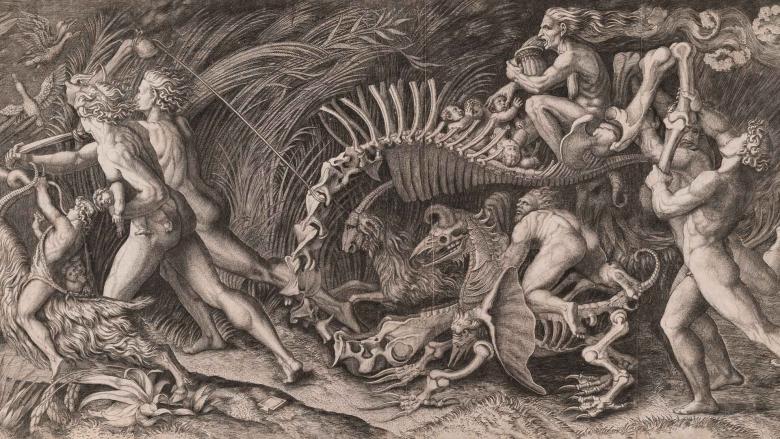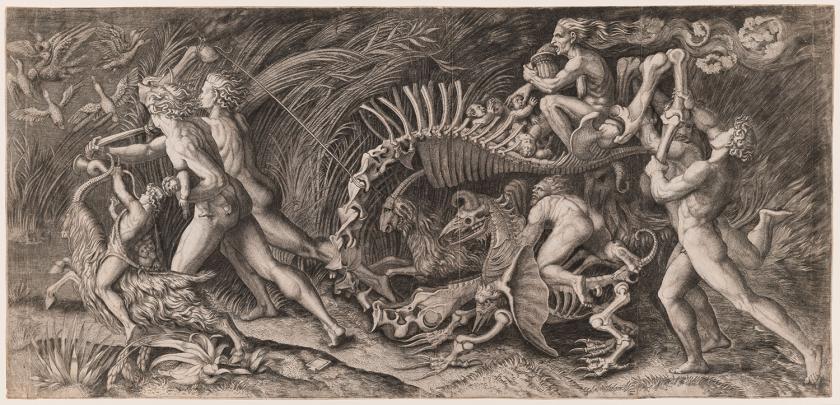The Bold and the Beautiful


Marcantonio Raimondi, The Carcass (detail), about 1520–27. Engraving. Gift of Myron Miller.


Marcantonio Raimondi, The Carcass (detail), about 1520–27. Engraving. Gift of Myron Miller.
Artistic invention and adventurous experimentation characterized the art of Europe in the 16th and early 17th centuries. Fueled by the rediscovery of ancient Roman sculpture, and by a drive to recapture and compete with its grace, balance, and energy, artists experimented boldly with style and composition. Turning to the inherent drama of the human body as a source of inspiration, they pushed the limits of traditional art in every way. Their innovations spread rapidly, carried by the thousands of prints that introduced audiences all over Europe to the most avant-garde movements in art.
This exhibition—comprised of prints from the Myron Miller collection, many of which are new gifts to the MFA—captures the energy, exploration, and spirit of creativity that thrived in Europe toward the end of the Renaissance. Visitors can explore nearly 70 etchings, engravings, woodcuts, and drawings from a period of Italian, Dutch, and Netherlandish printmaking at its most adept and sophisticated. Works like Hendrick Goltzius’s The Wedding of Cupid and Psyche (1587), which is one of the largest and most dramatic of all 16th-century prints, and contains nearly 80 figures in a virtuosic display of technique, show how artists of the era paid homage to tradition while pushing past its perceived limitations.
Over the last 25 years, Myron Miller has assembled an incomparable collection of works on paper dating from the Renaissance to the current day. His gift of works—one of the largest donations of early European prints to the MFA in decades—puts an indelible mark on our collection.
- Clementine Brown Gallery (Gallery 170)